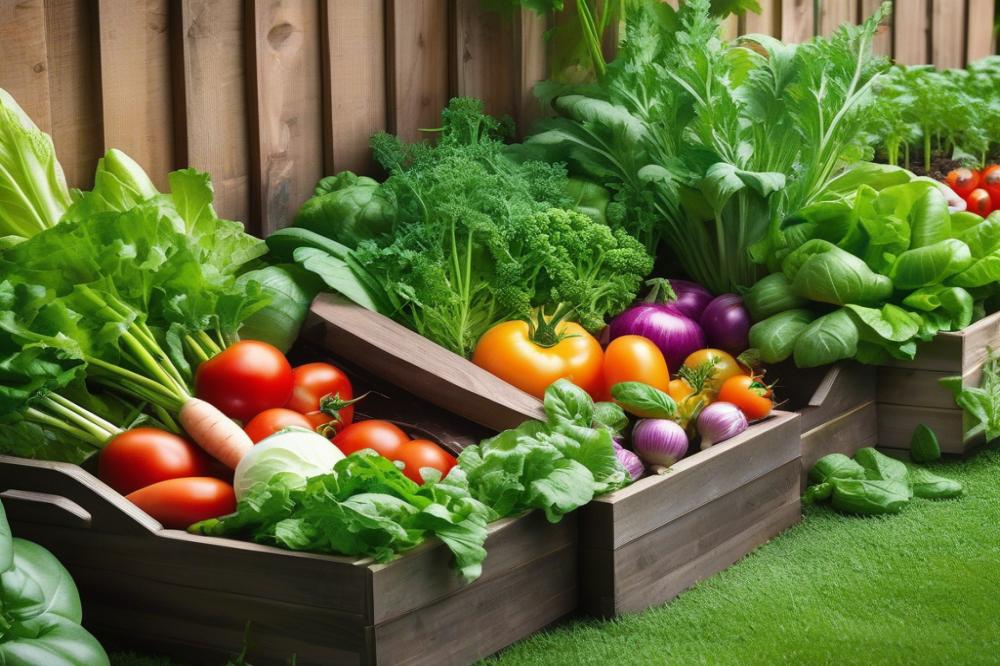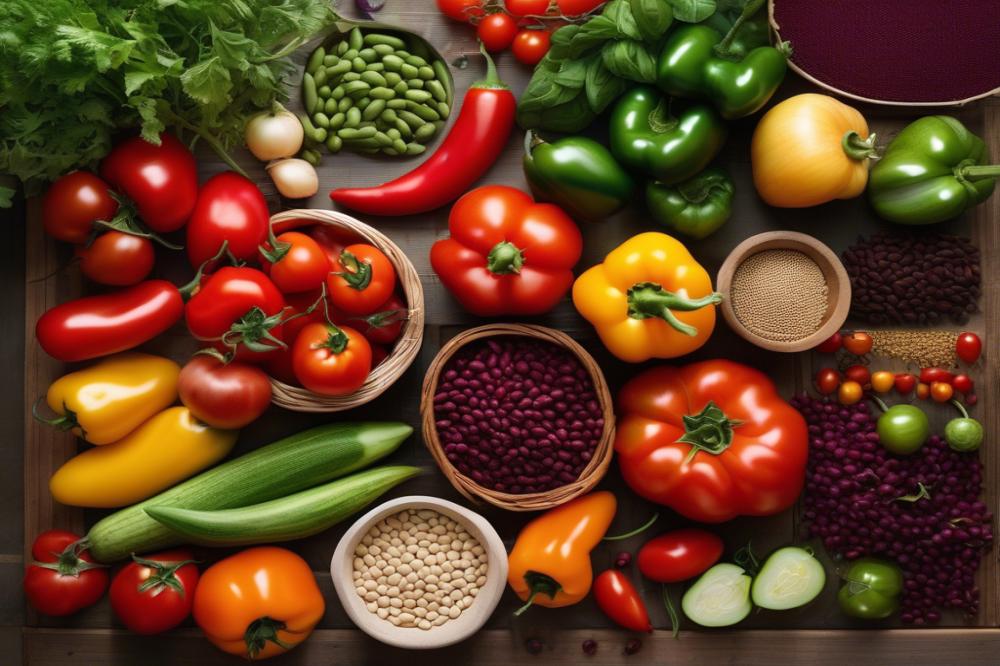Introduction
Tomatillos are small, green fruits enveloped in a papery husk. They might seem unfamiliar at first, but their flavor is essential for making rich salsa verde. This tangy sauce adds a burst of flavor to many dishes, enhancing everything from tacos to grilled meats. When you think about salsa ingredients, tomatillos stand out, balancing heat and acidity.
Growing tomatillos can be a delightful experience for any gardener. These plants thrive in sunny locations, creating lush foliage and vibrant fruit. Their unique characteristics make them a perfect addition to your vegetable gardening patch. Not only do they produce a stunning harvest, but they also enhance the beauty of your garden. Imagine a garden filled with bright green tomatillo plants, shimmering under the sun.
Especially if you’re fond of cooking with tomatillos, having fresh ones on hand makes all the difference. Home-raised fruits often taste better than store-bought options. Besides salsa verde, numerous tomatillo recipes can excite your culinary creativity, from soups to salsas. Learning proper garden tips, like soil requirements and pest control, helps ensure a successful growing season.
Experiencing the joy of planting tomatillos leads to the rewarding process of harvesting tomatillos. It’s more than just gathering fruit; it’s about the satisfaction of a job well done. So, if you’re ready to expand your gardening horizons, consider adding tomatillos to your plans. They complement tomatoes and other vegetables beautifully, making your garden truly special.
planting tomatillos


Ideal Growing Conditions for Tomatillos
Tomatillos thrive in warm climates. They need plenty of sunlight, ideally six to eight hours each day. These plants also prefer temperatures between 70°F and 85°F. Keeping them in warm conditions helps produce the best flavor. During cooler weather, growth can slow down significantly.
Choosing the Right Location in Your Garden
Select a spot that receives full sunlight. A south-facing area works well for tomatillos. Drainage is important, too; avoid low spots where water tends to collect. Having enough space, about two feet apart, will help air circulation. This helps reduce the chance of disease and pest issues.
Soil Requirements for Healthy Tomatillo Plants
Good soil is crucial for thriving tomatillo plants. They prefer well-draining soil rich in organic matter. A pH level between 6.0 and 7.0 is optimal. Adding compost can really improve soil quality. Conducting a soil test can provide important information about nutrient needs.
When to Plant Tomatillos for Optimal Growth
Timing is key in vegetable gardening. Tomatillos should be planted after the last frost. Typically, this is in late spring, around May in most regions. If you start indoors, you can plant seeds six to eight weeks earlier. Monitoring local frost dates ensures plants will not get damaged.
Seeds vs. Seedlings: Which is Best for Your Garden?
Deciding between seeds and seedlings can affect your harvest. Starting from seeds allows for more variety in tomatillo recipes. However, seedlings can give you a head start. If you are new to growing tomatillos, purchasing seedlings might simplify the process. Consider your gardening experience and available time when making the choice.
Caring for Tomatillo Plants


Watering your tomatillo plants is crucial for their growth. It’s best to keep the soil evenly moist but not waterlogged. During hot weather, check the soil regularly. A deep watering is often preferred, as it encourages deep root growth. Avoid letting the plants dry out completely, especially when they begin to flower.
Sunlight Requirements
Tomatillos thrive in full sun. Aim for at least six to eight hours of sunlight each day. Without sufficient light, the plants may stretch and produce fewer fruits. In a sunny location, the plants can achieve their maximum growth. Position them where they can soak up the sun’s rays from morning until late afternoon.
Fertilizing Your Tomatillos
These plants have specific nutrient needs. Start with well-draining soil that has a good balance of organic matter. A general-purpose vegetable fertilizer works well. Applying a slow-release fertilizer once at planting can provide essential nutrients. Additional feedings may be necessary every few weeks during the growing season.
Pest Control Strategies
Keep an eye out for common pests that can harm your tomatillo plants. Aphids and spider mites are frequent visitors. Utilize natural remedies like insecticidal soap to manage outbreaks. Encouraging beneficial insects, such as ladybugs, can help maintain a healthy garden ecosystem. Regular inspections can catch problems early before they become serious.
Common Diseases and Prevention
Diseases can threaten your growing tomatillos. Fungal infections like blight or rot can be detrimental to yields. Proper spacing between plants improves air circulation, reducing disease risk. Make sure to water at the base of the plants, avoiding wet leaves. Crop rotation is another effective strategy in vegetable gardening, as it helps break disease cycles.
harvesting tomatillos


Knowing When to Harvest for Optimal Flavor
Timing is crucial when growing tomatillos. They should be picked when the husks turn tan and start to dry. A tomatillo is ready if it fills the husk completely and feels firm to the touch. Colors can range from green to purple, depending on the variety. Harvesting too early may lead to tart flavors, while waiting too long can result in overly ripe fruit. Pay attention to size and firmness; this will guide your decision for the best salsa verde ingredients.
How to Properly Pick Tomatillos from the Plants
Approach the tomatillo plants gently when it’s time to harvest. Use your fingers to grasp the fruit, taking care to avoid damaging the delicate husks. Twist the tomatillos gently to detach them from the stem. Avoid pulling, as this can stress the plant and affect future growth. When picking, look for any signs of pests. Effective pest control measures can help ensure a healthy harvest. Collect them in a basket to avoid bruising.
Harvesting Tips for Maximum Yield
To maximize your harvest, check your plants frequently. Regularly inspect them for matured fruits and remove any that show signs of pests or disease. A strong routine helps maintain healthy tomatillo plants. Consider harvesting in the early morning when temperatures are cooler. This can preserve flavor and extend shelf life. Experiment with different tomatillo recipes after each harvest. Lastly, ensure your picking techniques do not damage the yellow flowers that may still be in bloom. Healthy plants will produce nature’s finest salsa ingredients.
Cooking with Tomatillos
Cooking with tomatillos can be an exciting culinary adventure. Their tangy flavor adds brightness to various dishes, especially salsa verde. A classic recipe for salsa verde begins with roasting tomatillos, which enhances their natural sweetness. You will also need fresh cilantro, lime juice, garlic, and jalapeños for a bit of heat. Experimenting with different salsa ingredients can yield many flavors. For a milder version, consider using less jalapeño or opting for a sweeter variety of pepper.
Not everyone likes things spicy, and that’s okay! For those who prefer a creamier texture, mixing in avocado can create a delightful twist on traditional salsa verde. Add a pinch of cumin for a smokier flavor or some green onions for extra crunch. You can even substitute tomatillos with green tomatoes in a pinch, although it won’t taste quite the same.
Additionally, tomatillos shine in recipes beyond salsa. Try using them in soups, where they can add depth and a touch of acidity. Add diced tomatillos to a chicken broth base or a vegetable soup for a refreshing zing. Their unique flavor can also brighten stir-fries or taco fillings.
For those interested in vegetable gardening, growing tomatillos is rewarding. Understanding their soil requirements is essential. They thrive in well-drained, nutrient-rich soil with plenty of sunlight. When planting tomatillo plants, proper pest control is necessary to keep them healthy and productive. Keeping an eye out for common pests can lead to a bountiful harvest.
Tomatillos can transform everyday dishes into something special. Their versatility is unmatched. Use them in sauces, relishes, and even desserts for a surprising kick. If you’re feeling adventurous, try making a tomatillo-based salsa with fruit like mango or pineapple for an unexpected sweetness. Enjoy the journey of cooking with tomatillos, and let your taste buds explore the possibilities!
Garden Tips for Growing Tomatillos
Companion Planting: Best Plants to Grow Alongside Tomatillos
Growing tomatillos can be more rewarding when you select the right companions. Basil is an excellent choice; it not only thrives near tomatillos but also enhances their flavor. Additionally, borage attracts pollinators and helps ward off pests. Corn can serve as a suitable support structure for tomatillo plants. Avoid planting them next to members of the nightshade family, like peppers and tomatoes, as they can compete for nutrients.
Seasonal Care and Mulching for Healthier Crops
Caring for tomatillos throughout the seasons is crucial. Regular watering is essential, especially during dry periods. Mulching helps retain moisture and suppresses weeds. In hotter months, consider using straw or wood chips, which can maintain soil temperature. When fall approaches, look for any signs of rot or pest issues. A light pruning before harvest can improve air circulation and reduce disease risk.
Maintaining a Successful Vegetable Gardening Practice with Tomatillos
Keeping a successful garden involves a few simple practices. First, understand the soil requirements for tomatillo plants; they prefer well-drained, fertile soil. Monitor your plants for pests, and utilize natural pest control methods whenever possible. Regularly checking for pests can save your precious salsa ingredients. Additionally, record your growing tomatillos progress. This can help you identify what worked well and what didn’t for future seasons. Cooking with tomatillos can be enjoyable, particularly when you use your homegrown produce in delicious salsa verde recipes.
Final Thoughts on Growing Tomatillos
Planting tomatillos offers numerous benefits. These plants are resilient and can thrive in various conditions. Their fruit is not only unique in flavor, but also packed with nutrients. You can easily enhance your garden’s diversity by adding tomatillos. This will make your salsa verde stand out with its vibrant zest and freshness.
When you harvest your tomatillos, you’ll find them bursting with flavor. Freshly picked fruits elevate any dish and provide a great base for sauces. The satisfaction of growing tomatillos will encourage you to keep experimenting in your kitchen. Imagine the joy of sharing your homemade salsa verde with family and friends.
If you haven’t tried growing tomatillos yet, now is the time. They are an exciting addition to your garden and your meals. With a little patience and care, these plants will reward you richly. Plus, it’s a fun project that helps you connect with nature.
So, why not take the plunge? Enjoy the process and look forward to a bumper crop. You’ll be surprised by how your cooking transforms with the addition of your own fresh ingredients. Start your journey in growing tomatillos, and relish the benefits today.



